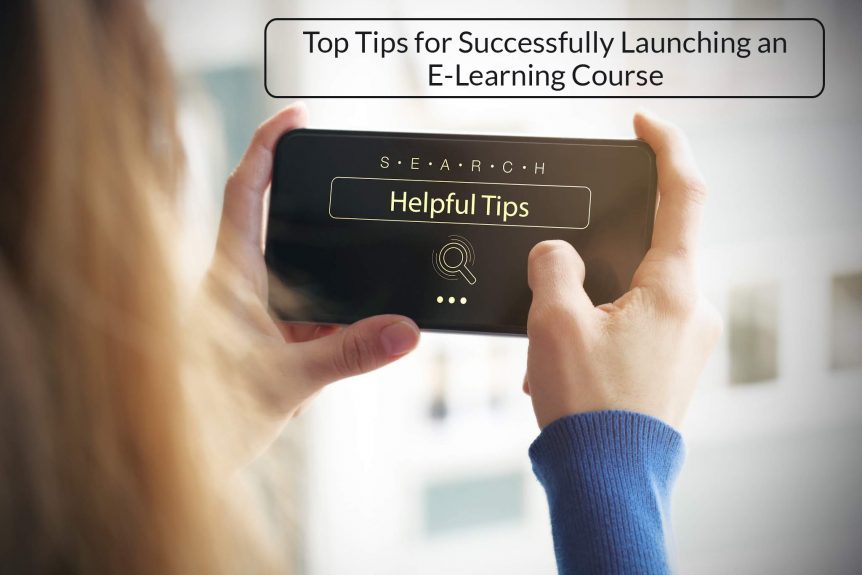Top Tips for Successfully Launching an E-Learning Course
A lot of effort goes into the creation of an e-learning course. After all, you want to make sure the course achieves your objectives and delivers a return on investment. That effort shouldn’t stop whenever the course is ready to launch.
This is because a properly prepared e-learning course launch will not only make the course more successful, but you will also reach success faster.
Remember, you don’t have to wait until your e-learning course developers in Dubai are finished designing your course as you can plan the launch while this work is ongoing. In fact, you will need to collaborate with them on some of the points below, so the earlier you get started the better.
Things to Check Before You Launch an E-Learning Course
There are several things you should check before sending your e-learning course to learners. Those things include:
- Objectives and learning goals – the first stage of developing a new e-learning course is to define your objectives and learning goals. You need to stay focused on these objectives and goals throughout the development, including as you get close to the launch phase.
- Spelling and grammar – make sure you check the spelling and grammar in your e-learning course, and then check, check, and check again. Also, getting more than one person to do these checks will improve levels of accuracy.
- Is each unit self-sufficient? – one of the benefits of e-learning is that learners can progress through a course at their own pace. This means they often don’t complete a course in one sitting. Instead, they do one or more units of the course at a time. Therefore, it’s important each unit of your course is as self-sufficient as possible.
- Branding – before you launch an e-learning course, make sure your brand is properly presented.
- Navigation and progress indicators – it’s also worthwhile to check the navigation elements and progress indicators of the course before the launch, as they are an important factor in learner experience. Importantly, try to view the navigation and progress indicators from the perspective of learners.
- Does everything work – check all elements of the course on as many devices and browsers as possible. This includes multimedia elements, gamification elements, links, forms, quizzes, and more. Your e-learning developer should be able to help with this part of the process.
After you have gone through the above checks, your e-learning course should be structurally and technically ready to launch. There are still some things you should consider and/or do, however.
Compile a List of Additional Resources and Links
Some learners may struggle with aspects of the e-learning course, while you might have other learners who will want to go into topics in more detail. Creating a list of additional resources and links can help with both these situations.
Make Sure You Have a Strategy for Dealing with Feedback
A crucial part of implementing an e-learning course is getting learner feedback. With learner feedback, you can make improvements to the course, to future courses, and to the overall training strategy in your organisation.
That said, you need to have a plan for dealing with the feedback you get. How will you filter feedback into the training course development process, for example? How will you decide if a suggestion is a minority view that offers minimal benefits or is something that will genuinely enhance and improve the course?
Get the answers to these questions before you launch the course.
Create Your Pitch
You will need to inform learners there is a new e-learning course available as well as give them the information they need to know. This pitch should include:
- The benefits of the e-learning course. Make sure you include benefits to the learner in addition to benefits to your organisation.
- Instructions on how to access the course.
- Information on what is expected of learners. This can include timelines when they should complete the course, what they need to achieve on assessments, etc.
- Information on where learners can find additional help if they need it.
Get the Timing Right
You don’t want an e-learning course to fall short of its objectives because you released it at the wrong time. Examples include releasing it to a team who is up against a significant deadline so is already under pressure. Another example is releasing the e-learning course during or just before a holiday period.
So, think carefully about the timing and talk to managers and department heads so you understand what is happening in their business units.
Consider Running a Pilot Launch
This tip is particularly useful if the e-learning training course you are developing will be completed by a large number of people. In this type of situation, running a pilot will give you a chance to identify issues and areas for improvement before the course gets a more widespread launch.
Identify Course Champions
It can also be helpful to identify course champions before you launch a new e-learning training module. These are the people you know will welcome the training for themselves, for members of their team, or both.
Get these people on board with the course and your objectives as soon as possible, ensuring they understand the benefits. Then, encourage these champions to discuss and promote the course with others on their team.
Things to Do Post-Launch
By following the above tips, you will set-up your e-learning course for a successful launch. However, there is still more you can do after you have launched the course to make it even more successful. We’ll explore this topic in our next blog.
